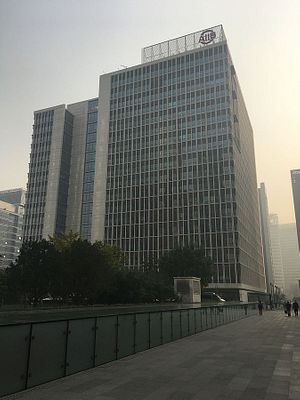Earlier this month, the China-led Asian Infrastructure Investment Bank (AIIB) approved its first-ever loan for a project in India. The AIIB will lend $160 million to back a power project in the Indian state of Andhra Pradesh. India is a founding member of the AIIB, where it is the second-largest shareholder, behind China.
The AIIB is a development bank first announced by China in October 2013, at the same time Chinese President Xi Jinping introduced the Silk Road Economic Belt and Maritime Silk Road initiatives — the two pillars of China’s Belt and Road Initiative. The bank began operations in January 2016.
According to a release by the AIIB, the $160 million loan will go toward the 24×7 Power for All initiative “with the objective to strengthen the power transmission and distribution system in the State of Andhra Pradesh.” The Power for All initiative was launched in 2014 by the government of Indian Prime Minister Narendra Modi to make the establishment of power supply infrastructure across the country a priority.
Jin Liqun, the president of the AIIB, noted that the “AIIB supports its members in their transition toward a low-carbon energy mix by promoting the improvement of energy efficiency, such as upgrading the existing transmission and distribution networks.” He added that he was “delighted that AIIB is working closely with India, who is our second-largest shareholder, in energy and other infrastructure sectors.”
The AIIB’s first loan to India comes as New Delhi has expressed its reservations about China’s Belt and Road Initiative more broadly. In the days leading up to China’s first-ever Belt and Road Forum in Beijing, India indicated that it would not send any official delegation despite its participation in the AIIB — one of the initiative’s associated institutions. Indian opposition to the Belt and Road focuses on the China-Pakistan Economic Corridor, which passes through parts of Kashmir currently administered by Pakistan but claimed by India.
India’s position on the AIIB, however, is separate from its broader thinking about China’s Belt and Road. As the Brookings Institution’s Tanvi Madan has explained, India participates willingly in the AIIB because China approached it early on in the institution’s life cycle. India’s deputy foreign minister noted earlier in the year that New Delhi would prefer to be consulted “from the conception stage itself.”
While India is the second-largest shareholder in the AIIB, China continues to enjoy a large enough vote share that it exercises an effective veto over the bank’s funding decisions. To date, the AIIB has funded projects across Asia, including in Bangladesh, Indonesia, Myanmar, Pakistan, and Tajikistan. The bank has collaborated with existing development banks and agencies, including the World Bank and the Asian Development Bank, on multiple projects.































